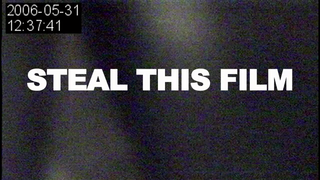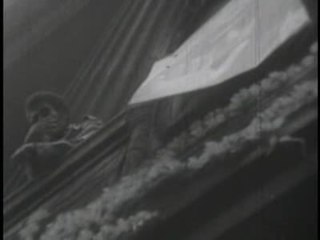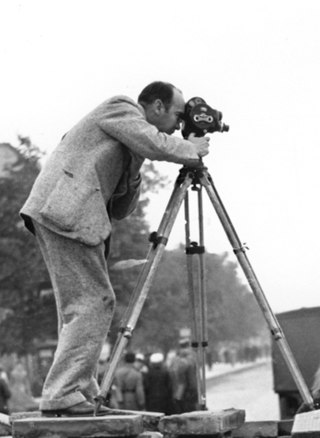
Why We Fight is a series of seven propaganda films produced by the US Department of War from 1942 to 1945, during World War II. It was originally written for American soldiers to help them understand why the United States was involved in the war, but US President Franklin Roosevelt ordered distribution for public viewing.

Steal This Film is a film series documenting the movement against intellectual property directed by Jamie King, produced by The League of Noble Peers and released via the BitTorrent peer-to-peer protocol.

Our Job in Japan was a United States military training film made in 1945, shortly after World War II. It is the companion to the more famous Your Job In Germany. The film was aimed at American troops about to go to Japan to participate in the 1945–1952 Allied occupation, and presents the problem of turning the militarist state into a peaceful democracy. The film focused on the Japanese military officials who had used the traditional religion of Shinto, as well as the educational system, to take over power, control the populace, and wage aggressive war.

That Justice Be Done was a one-reel American propaganda film directed by George Stevens and made in 1945 by the Office of War Information for the US Chief of Counsel at Nuremberg and the War Crimes Office of the Judge Advocate General's Corps.

Kokoda Front Line! was a full-length edition of the Australian newsreel, Cinesound Review, produced by the Australian News & Information Bureau and Cinesound Productions Limited in 1942, about the Kokoda Track campaign. It was one of four winners of the 15th Academy Awards for best documentary, and the first Australian film to win an Oscar. It was filmed by the Australian war photographer Damien Parer and directed by Ken G. Hall.

Columbia Revolt is a 50-minute, black-and-white documentary film about the Columbia University protests of 1968. The film was made that year by a collective of independent filmmakers called Newsreel and mostly shot by Melvin Margolis. It features a number of off-camera interviews with unnamed students who were involved in the takeover of university buildings.
The World at War is a 1942 documentary film produced by the Office of War Information. One of the earliest long length films made by the government during the war, it attempted to explain the large picture of why the United States was at war, and the various causes and circumstances which brought the war into being. It can thus be seen as an anticipation, or trial run of the much better known six-part Why We Fight propaganda film series directed by Frank Capra.
Here Is Germany is a 1945 American propaganda documentary film directed by Frank Capra and written by William L. Shirer, Gottfried Reinhardt, Ernst Lubitsch, Georg Ziomer and Anthony Veiller. Like its companion film, Know Your Enemy: Japan, the film is a full-length exploration of why one of the three major Axis countries started World War II and what had to be done to keep them from "doing it again".

Die Deutsche Wochenschau is the title of the unified newsreel series released in the cinemas of Nazi Germany from June 1940 until the end of World War II, with the final edition issued on 22 March 1945. The co-ordinated newsreel production was set up as a vital instrument for the mass distribution of Nazi propaganda at war. Today the preserved Wochenschau short films make up a significant part of the audiovisual records of the Nazi era.
Between 1941 and 1945, during World War II, Walt Disney was involved in the production of propaganda films for the U.S. government. The widespread familiarity of Disney's productions benefited the U.S. government in producing pro-American war propaganda in an effort to increase support for the war.
Two Down and One to Go was a short propaganda film produced in 1945 directed by Frank Capra; as its title might suggest, its overall message was that the first two Axis powers, Italy and Germany, had been defeated, but that one, Japan, still had to be dealt with.
The Nazi Plan is a 1945 documentary film, compiled from extensive footage of captured Nazi propaganda and newsreel image and sound recordings. It was produced and presented as evidence at the Nuremberg Trials for Hermann Göring and twenty other Nazi leaders.

Julien Hequembourg Bryan was an American photographer, filmmaker, and documentarian who documented the daily life in Poland, Soviet Union, and Nazi Germany between 1935 and 1939, in the leadup to and early days of the Second World War. He was honored with a Decoration of Honor Meritorious for Polish Culture during his last visit in Poland (1974) for showing the truth about the Invasion of Poland.

Claus Karl Schilling, also recorded as Klaus Schilling, was a German tropical medicine specialist who participated in the Nazi human experiments at the Dachau concentration camp during World War II.
The Steven Spielberg Jewish Film Archive is dedicated to the preservation and research of Jewish documentary films. The archive is jointly administered by the Abraham Harman Institute of Contemporary Jewry at the Hebrew University of Jerusalem and the Central Zionist Archives of the World Zionist Organization (WZO).
German Concentration Camps Factual Survey is the official British documentary film on the Nazi concentration camps, based on footage shot by the Allied forces in 1945.
Dasein ohne Leben – Psychiatrie und Menschlichkeit is a 1942 Nazi propaganda film about the physically and mentally disabled. The film labeled inherited mental illness as a threat to public health and society, and called for extermination of those affected.
This page is based on this
Wikipedia article Text is available under the
CC BY-SA 4.0 license; additional terms may apply.
Images, videos and audio are available under their respective licenses.








